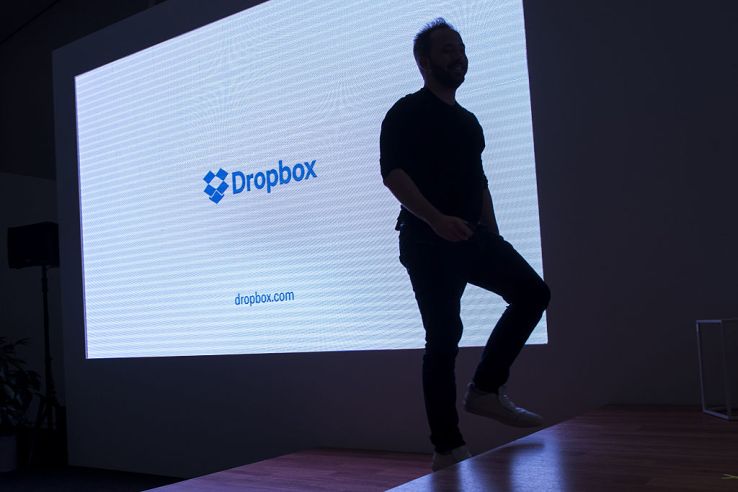
After announcing an IPO in February, today Dropbox updated its S-1 filing with pricing. The cloud services and storage company said that it expects to price its IPO at between $16 and $18 per share when it sells 36,000,000 shares to raise $648 million as “DBX” on the Nasdaq exchange.
In addition to that, Dropbox announced that it will be selling $100 million in stock to Salesforce — its new integration partner — right after the IPO, “at a price per share equal to the initial offering price.”
A specific date has not yet been set for Dropbox’s listing later this month.
The IPO pricing values the company at between $7 billion and nearly $8 billion when you factor in restricted stock units — making it the biggest tech IPO since Snap last year, but still falling well below the $10 billion valuation that Dropbox crept up to back in 2014 when it raised $350 million in venture funding.
Many will be watching Dropbox’s IPO to see if it stands up longer term and becomes a bellwether for the fortunes and fates of many other outsized “startups” that many have also expecting to list, including those that have already filed to go public like Spotify, as well as those that have yet to make any official pronouncements, like Airbnb.
Some might argue that it’s illogical to compare a company whose business model is built around cloud storage with a travel and accommodation business, or a music streaming platform. Perhaps especially now: at a time when people are still wincing from Snap’s drastic drop — the company is trading more than 30 percent down from its IPO debut — Dropbox presents a challenging picture.
On the plus side, the company has helped bring the concept of cloud storage services to the masses. Riding on the wave of mobile devices, lightweight apps, and faster internet connections, it has changed the conversation about how many conceive of handling their data and offloading it off of their devices. Today, Dropbox has more than 500 million users in more than 180 countries.
On the minus side, only around 11 million of those customers are paying users. The company reported around $1.1 billion in revenues in 2017, representing a rise on $845 million in 2016 and $604 million in 2015. But it’s unprofitable, reporting a loss of $112 million in 2017.
Again, that’s a large improvement when you compare Dropbox’s 2016 loss of $210 million in 2016 and $326 million in 2015. But it does beg more pressing questions: Does Dropbox have a big plan for how to convert more people into paying users? And will its investors have the patience to watch its business models play out?
In that regard, the Salesforce investment and integration, and its timing of being announced alongside the sober IPO range, is a notable vote of confidence in Dropbox. Salesforce has staked its whole business model around cloud services — its ticker may be “CRM”, but its logo is its name inside a cloud — and it’s passed into the pantheon of tech giants with flying colors.
Having Salesforce buy into Dropbox not only shows how it’s bolstering its new partner Dropbox in the next phase, but I’d argue also gives Dropbox one potential exit strategy. (Salesforce, after all, has been interested in playing more directly in this space for years at this point.)
Featured Image: Bloomberg/Getty Images


